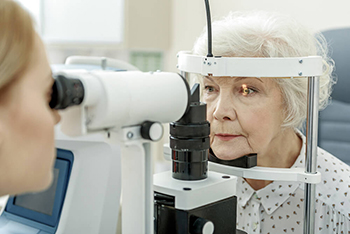 Many people have heard of glaucoma, but don’t quite understand what it is. Here at Minnesota Eye, we believe knowledge of these types of diseases is extremely important. While there is no way to prevent glaucoma, being proactive about catching glaucoma early can help prevent vision loss. Prevention is key when it comes to glaucoma-related vision loss, so here is everything you need to know to keep your vision safe!
Many people have heard of glaucoma, but don’t quite understand what it is. Here at Minnesota Eye, we believe knowledge of these types of diseases is extremely important. While there is no way to prevent glaucoma, being proactive about catching glaucoma early can help prevent vision loss. Prevention is key when it comes to glaucoma-related vision loss, so here is everything you need to know to keep your vision safe!
What Is Glaucoma?
Glaucoma is a condition that causes elevated eye pressure, which over time can permanently damage the optic nerve. Damage to the optic nerve causes permanent vision loss. Left untreated, glaucoma can cause total blindness.
Glaucoma is often called the “silent thief of sight.” This is because vision loss often occurs with no signs or symptoms. There is no way to detect glaucoma on your own, so many people do not realize they have it until they start noticing changes in their vision. At that point, any vision loss is permanent.
So, how can you prevent glaucoma-related vision loss if there are no symptoms?
Comprehensive Eye Examinations
This may sound obvious to some, but the only real way to be proactive about vision loss is to attend regular comprehensive eye examinations. During all eye exams, doctors will test for elevated pressure in the eye. While elevated intraocular pressure (IOP) doesn’t always mean you have glaucoma, it is a major risk factor. If you test for high IOP, your eye doctor will devise a plan to prevent glaucoma-related vision loss.
People who are at high risk for glaucoma should attend these eye examinations once a year. People with low risk should be tested every two to three years. Risk factors for glaucoma include:
- High IOP
- Being of Hispanic or African descent
- Being over the age of 60
- Having a family history of the condition
- Having eye conditions like nearsightedness
- Having medical conditions like diabetes, heart disease, and hypertension
- Having an eye injury or previous eye surgery
Acute Closed-Angle Glaucoma
Typically when we’re talking about glaucoma, we’re referring to the most common type: open angle glaucoma. There are many different types of glaucoma, however. Another type that is important to watch out for is called acute closed-angle glaucoma.
With open-angle glaucoma, the pressure in the eye builds up slowly as a result of a slight fluid blockage. The fluid is not able to drain fast enough, resulting in slowly worsening IOP. Acute closed-angle glaucoma is much different than open-angle glaucoma.
Closed-angle glaucoma is caused by a sudden, complete blockage of the drainage system in the eye. This means fluid builds up rapidly, causing sudden symptoms. These symptoms include headache, eye pain, dizziness, nausea, and vomiting. If you experience these symptoms, contact emergency services.
Glaucoma Treatments
If you are diagnosed with glaucoma, you have options. Hopefully, your glaucoma was diagnosed before any vision loss occurred. If not, your doctor will be there to help prevent further vision loss, as well as offer coping advice for living with low vision or blind spots.
Preventing further vision loss may require a combination of treatments. Medications and surgery can be used together or separately to control glaucoma.
If you have been diagnosed with glaucoma and would like to schedule an appointment, contact Minnesota Eye Consultants in Minneapolis. Our Minneapolis glaucoma experts are able to quickly diagnose you and get you on the path to treatment. Our glaucoma doctors value prevention and can guide you on how best to avoid vision loss. Contact us today!









